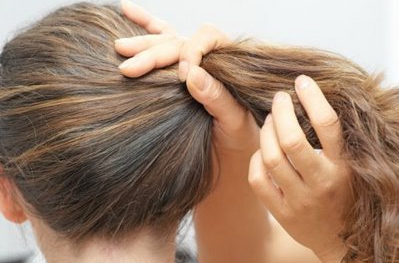
I can speak for everyone when I say that the way our hair looks plays a huge role in how we look and how we feel. With the exception of you dare devils that are bald or have super short cuts by choice! Nothing sucks more than feeling less confident because the hair that you were born with is betraying you. Sure, there are somethings you can control like, taking proper care of your hair, drinking lots of water, and eating the right foods. However, there are also reasons that are out of your control such as genes, health related problems, aging, and hormones. When hair is damaged, thinning, or just won’t grow, a lot of men and women turn to expensive pills that claim to regrow hair, hair products that claim to reverse hair damage, and even more invasive procedures such as hair transplants that can be a very painful quick fix.
By no means am I saying that you should throw away your pills and hair products that you spent your hard earned money on! But hear me out…imagine an alternative that you don’t have to swallow, doesn’t hurt, and doesn’t break the bank. For years, herbalists and aromatherapists have suggested using essential oils to treat hair loss, thinning hair, and many types of alopecia. There are many natural and noninvasive approaches to health and beauty! If you haven’t noticed yet, a lot of beauty products actually incorporate a lot of essential oils into their formula as a key ingredient!
Benefits of Cedarwood Essential Oil
Before we have a look to amazing benefits of cedarwood essential oil for hair, here are some of the most common benefits of cedarwood essential oil include:
- improves focus and wisdom
- promotes hair growth
- has anti-inflammatory agents
- cures toothaches
- strengthens gums
- reduces skin irritations
- relives spasms
- cures fungal infections
- repels bugs
- cures acne
- reduces cough
- stimulates metabolism
- regulates menstruation
- tightens muscles
- cleans out toxins
Cedarwood can be used to stimulate the scalp which can do so much for your hair. Hair can weaken due to poor blood circulation in the scalp. By using a stimulant and massaging it into your scalp, you can get the blood flowing and therefore, wake up those follicles which promotes growth.
So here is how Cedarwood Essential Oil can help in hair growth:
- Stimulates blood circulation in scalp
- Relieves fungal infections in scalp
- Promotes hair growth
- Combats oily hair
- Relieves dandruff
- Makes hair look and feel healthier
Like I said before, I don’t want you to get rid of your current products. You can actually add a few drops of Cedarwood Essential Oil into your conditioners, shampoos, serums, and hair treatments. You can even mix with other essential oils you may be using! Cedarwood blends well with oils such as benzoin, bergamot, cinnamon, cypress, frankincense, jasmine, juniper, lavender, lemon, neroli, rose and rosemary.
Nothing like a secret essential oil concoction that noticeably improves your mane.
Cedarwood Oil Recipes for Hair:
- To relieve dandruff:
- Blend 6 drops cedarwood, 6 drops rosemary essential oil and 4 drops cypress oil with 50ml olive oil. Massage into the scalp and leave to soak overnight. Shampoo thoroughly the next day.
- To combat oily hair:
- Another useful recipe to combat oily hair is to blend 4 teaspoons grape seed oil with 5 drops each of cedarwood oil, cyprus oil and peppermint oil. Add to a quarter cup of fresh lemon juice. Massage into the scalp and leave for at least 2 hours before washing out.
Bonus: Cedarwood Essential Oil is very calming and relaxing making it great for stress and anxiety! It also has a sweet, light, and woodsy scent so while giving yourself a scalp massage, imagine yourself being in a spa as you rid yourself of the tension.
WebMD suggest that for those of you with allergies or sensitive skin that if you apply some essential oils directly to your scalp, they may cause irritation. Diluting them is the answer. Read label instructions for how to dilute oils, and never use them in higher-than-recommended amounts. Also, if you’re allergic to plants such as ragweed, test the oil on a small area of your skin or scalp to see if you have a reaction.
Leave a Reply